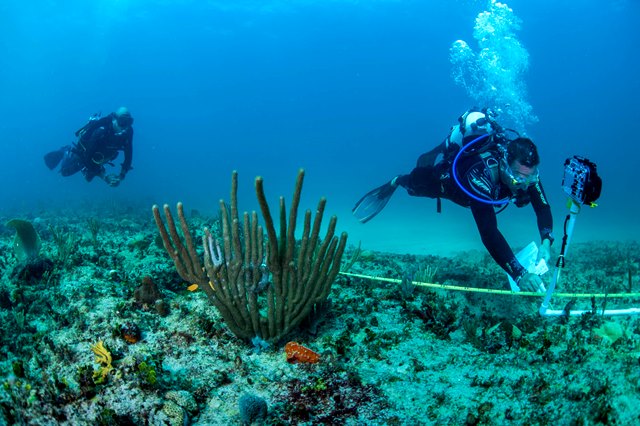DUTCH CARIBBEAN – Coral reef assessments carried out in Saba, Saba Bank, St. Eustatius and St. Maarten with conservation organizations, the Waitt Institute and Scripps Institute of Oceanography Conservation organizations from Saba, St. Eustatius and St. Maarten, recently joined a research expedition organized by the Scripps Institute of Oceanography and the Waitt Foundation.
This research aims to monitor coral reefs around the Windward Dutch Caribbean islands, gathering valuable data on coral reefs and fish populations. From November 7-16, coral reefs across the islands were assessed following the Global Coral Reef Monitoring Network protocol for the Caribbean (GCRMN-Caribbean).
This protocol ties in to a global network conducting and reporting on long-term and robust coral reef monitoring, including status and trends of coral reef ecosystems, with the aim to support their conservation and management. The monitoring project was a direct result of a GCRMN workshop held in Jamaica in April this year.
During the research expedition, a team of international scientists from the Saba Conservation Foundation, St. Eustatius National Parks Foundation, St. Maarten Nature Foundation and the Dutch Caribbean Nature Alliance, teamed up with the Scripps Institute of Oceanography and the WAITT Institute.
This collaboration provided a platform for continued learning and calibration of the GCRMN monitoring methods amongst the islands, strengthening the capacity of conservation organizations to monitor coral reefs and to guide policy decisions on their management and protection.
In addition to coral reef assessments following the GCRMN protocol, a selection of coral reef environments was mapped using 3D imagery. These techniques make use of photography and advanced image post-processing to create photomosaic images of large reef areas up to 100 square meters. These images provide a snapshot view of large-area coral reef communities and their compositions.
A total of 55 sites were assessed during the expedition and it is the intention to repeat this assessment in two years’ time in the same locations. Repeated assessments will allow researchers to see changes and trends in reef composition and subsequently its health. In addition to local trends these assessments will allow for a comparison of coral reef health in the Dutch Caribbean region.






























